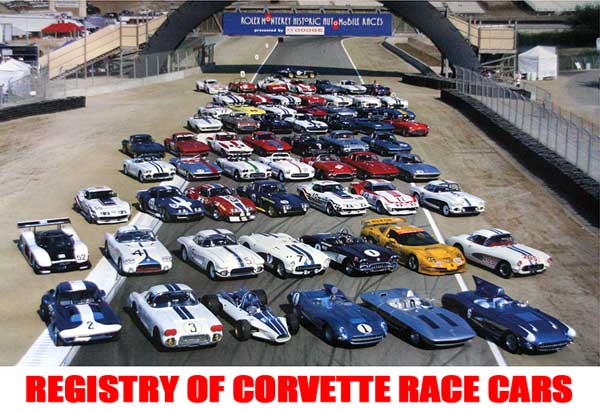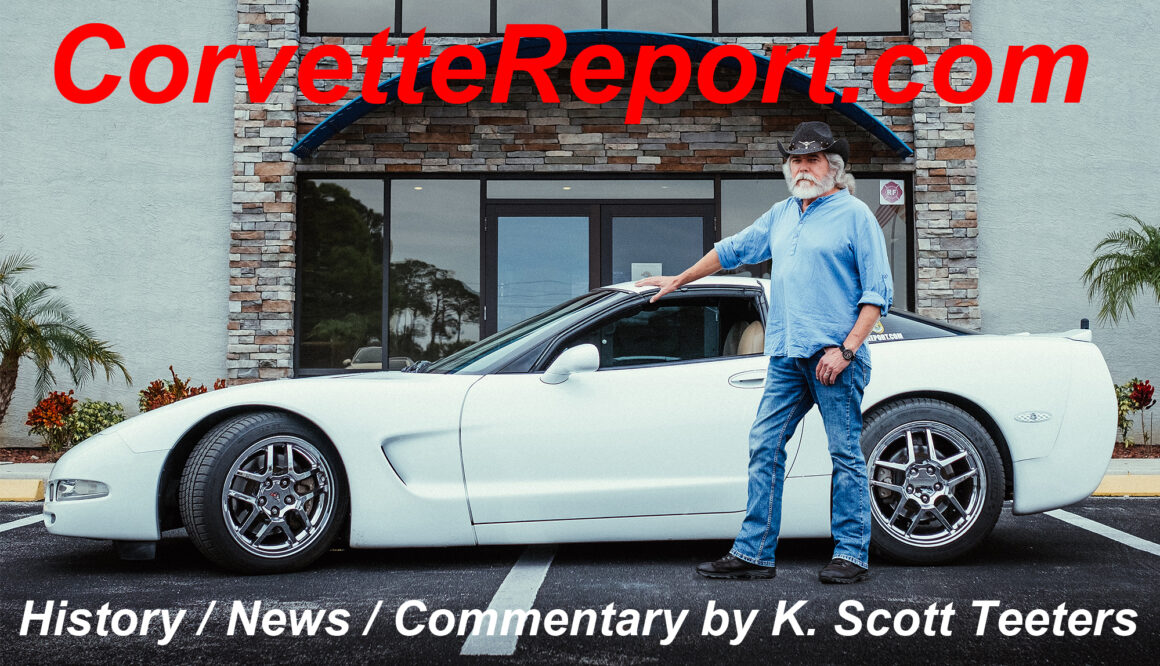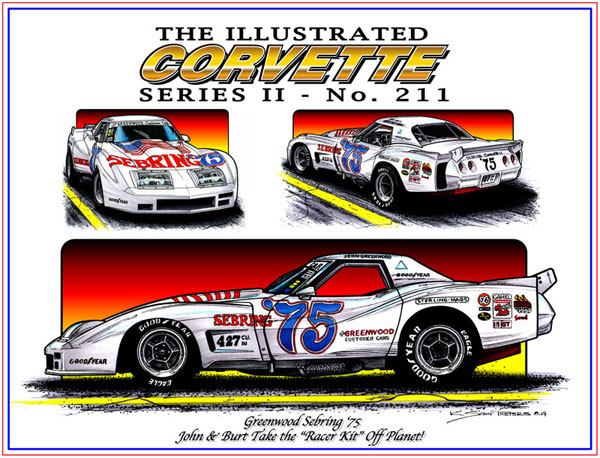A Brief Tribute to Corvette Racing Legend, John Greenwood
Dateline: 7.13.15 (There are four videos at the end of this post)
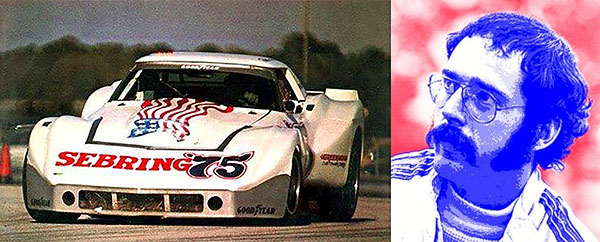
The Corvette community lost another legend last week. On July 7, 2015 John Greenwood died. During the 1970s John and his brother Burt arguably made more of an impact of Corvette racing than anyone in their time.
Their most stunning legacy was the development of the Corvette wide-body, also known as the “Batmobile.” The wide-body kit was the last of what was unofficially known as “Duntov’s Racer Kit” series of Chevrolet engineered parts for road racing Corvettes.
By 1974 racing tires had almost quadrupled in width from those of the early 60s and were beyond the L88 fender flares that had been out since 1968. Racers were also learning about and making better use of air downforce. Chevrolet designed the wide-body kit and Greenwood developed and marketed the parts into a huge aftermarket enterprise, along with building all-out racing Corvettes for customers. The Greenwood brothers engineered suspension parts and setups and made them available to customers.
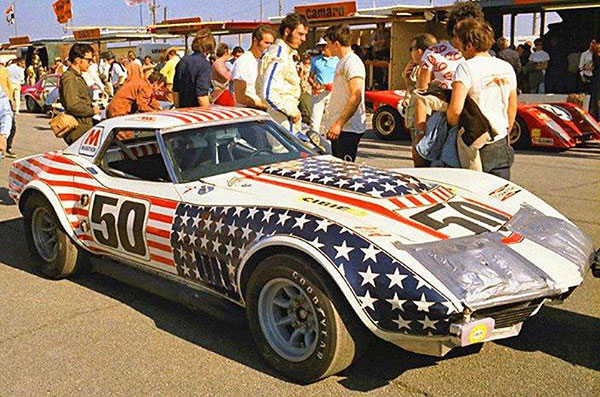
The wide-body look was so popular that complete street versions were offered by Greenwood and privateers could build their own street versions by purchasing the body kits. John and Burt also made body kits for C4 Corvettes, but the term “Greenwood body” will forever be linked to what it undeniably the wildest Corvette look ever
Below is a tribute to John Greenwood written by Registry of Corvette Race Cars and Vette Vues contributing writer/photographer, Wayne Ellwood that was published on July 13, 2015. Many thanks to Wayne Elwood for his brief overview of John Greenwood’s racing career. Condolences to the Greenwood family. – Scott
John Greenwood, Innovator and Influencer
Died on July 7, 2015 age 71
Greenwood held sway in Corvette racing for a decade
By Wayne Ellwood
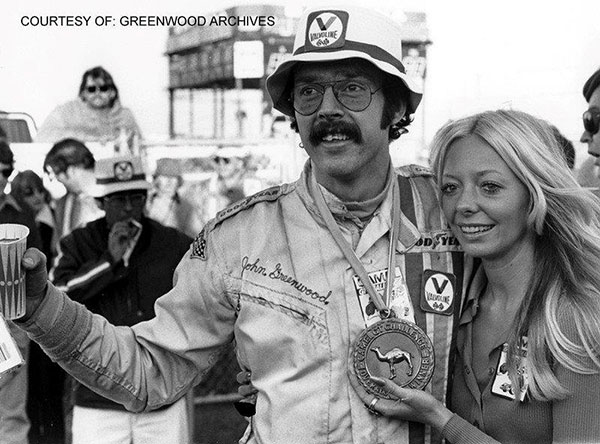
The son of a GM executive, John Greenwood began drag racing as a teenager on Detroit’s famed Woodward Ave strip. A few years later, he caught the road-racing bug after entering his new 1968 Corvette in a parking lot solo event. That was enough. When he took his big block Corvette to Waterford Hills it marked the start of a remarkable career in SCCA and IMSA, a full-blown race shop, a sponsorship program with the BF Goodrich Tire Company, a thriving cars and parts business, and three trips to the 24 hour race at Le Mans, France.
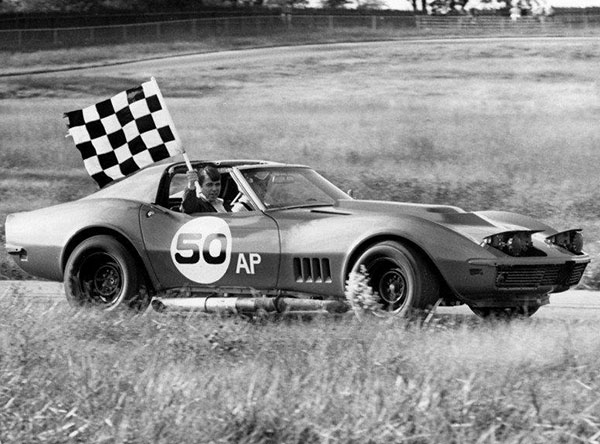
In 1970 and 1971 John qualified for the SCCA runoffs winning the A Production National championship 2 years in a row. John’s initial paintwork evolved into the signature “Stars and Stripes” theme, variations of which are seen on many Corvettes to this day. His stars and stripes might have also inspired the “Rebel” paint job on the Corvette of racing rivals Dave Heinz and Or Costanzo.
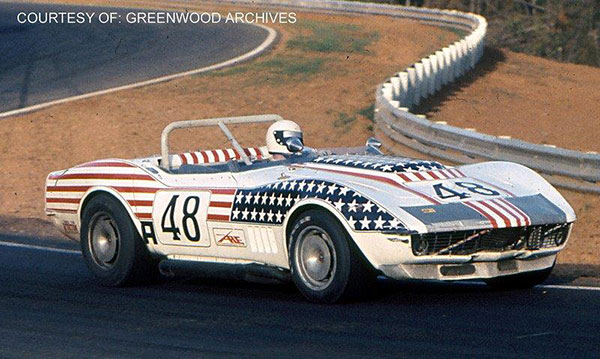
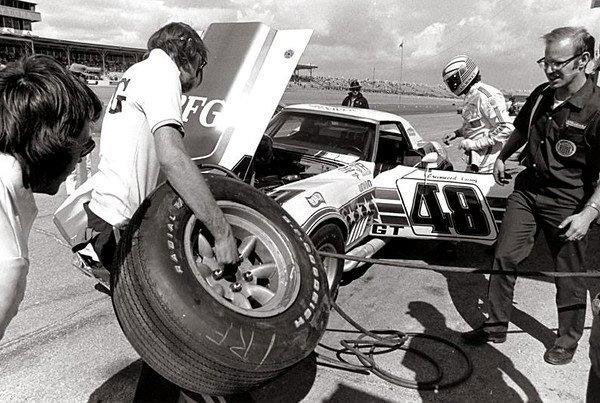
John caught the attention of Frank Cipelli at Michigan International Speedway who helped make the deal with BFGoodrich that launched John and his brother Burt into the big leagues. Using this contract as leverage, John built Corvettes configured for FIA endurance racing. His co-drivers at the 24 hours of Daytona and the 12 Hours of Sebring include famed comedian Dick Smothers (1971 GT Sebring winners), Don Yenko, Bob Johnson, Tony Adamowicz, Ron Grable, Allan Barker, Dick Lang, Gib Hufstader, Mike Brockman, Jim Greendyke and his brother Burt.
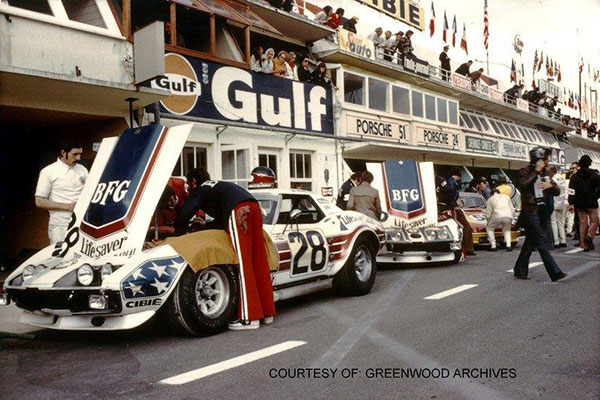
The deal with BFG also gave Greenwood’s team the backing to race two Corvettes at Le Mans in 1972 and 1973. It put him on the map although none managed to finish the 24-hour race.
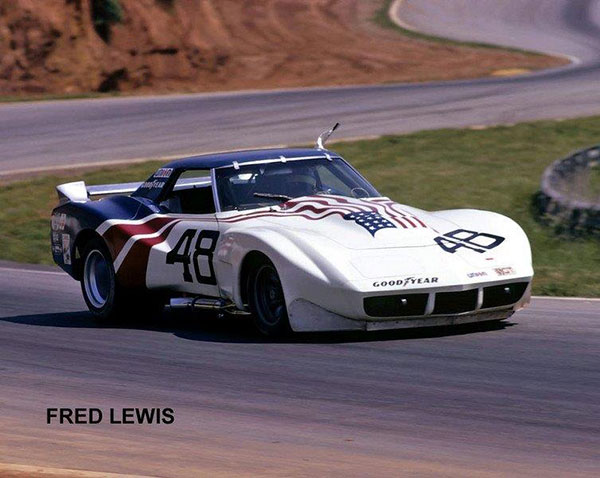
1974 brought along anti-pollution mandates, higher insurance costs and the mid-east oil embargo. It would take years for technology to rescue the manufacture of high performance automobiles but that did not stop Greenwood.
He relied upon connections with chassis and suspension expert Bob Riley, and with GM designer Randy Wittine to create the first wide-body Corvette. Since GM had renounced racing, it fell to Greenwood to develop his cars with continued support and parts from an “underground” network spearheaded by Gib Hufstader.
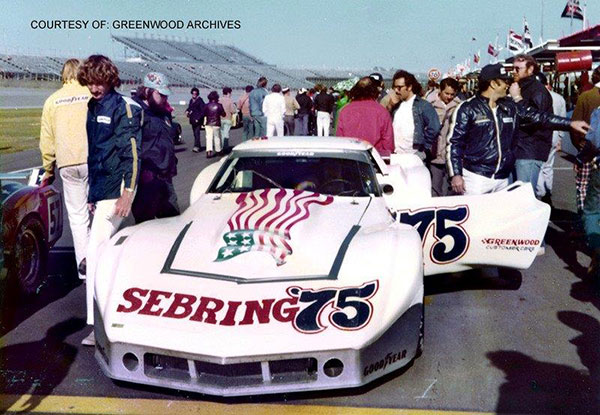
Greenwood’s wide-bodies became American fan favorites, challenging the factory supported customer teams of Porsches and BMWs that held a grip on GT racing John Bishop’s growing IMSA series.
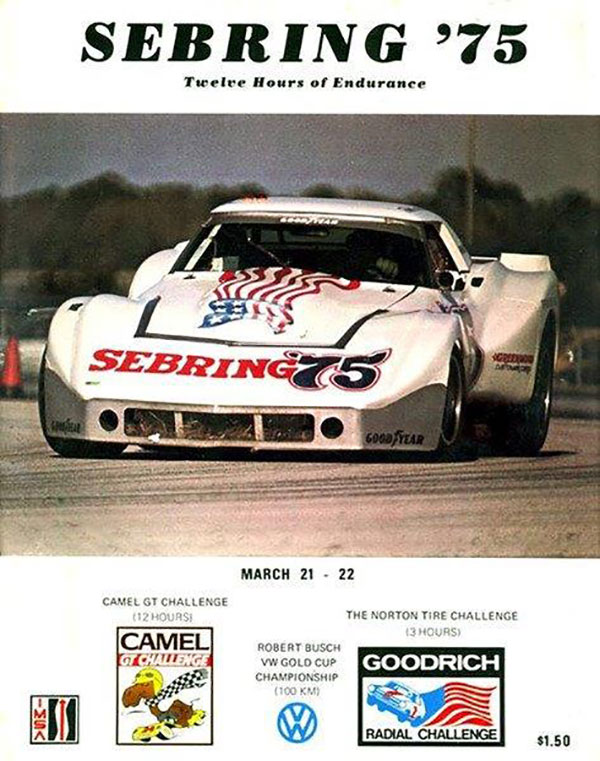
The Sebring 12 hour race was also victimized by the times in 1974, forced to cancel by a national recession and jacked up fuel prices which put a damper on consumer spending. That left the organizers short of money to pay for track safety improvements mandated by the FIA. When it looked like the 1975 Sebring event was also imperiled, John Greenwood stepped up to promote the 23rd and 24th 12 hours of Sebring, saving the historic race from possible extinction.
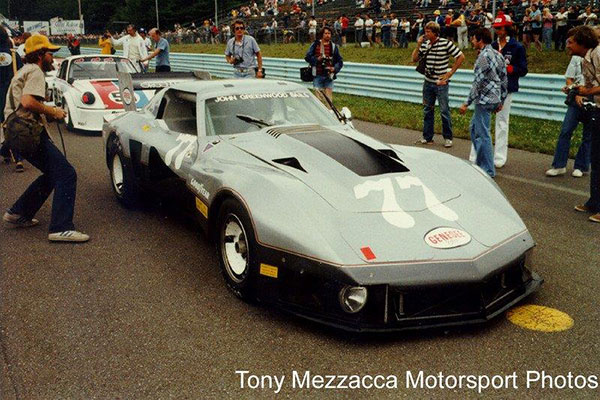
Racing in Europe was also affected. So in 1976 the Le Mans organizers invited Greenwood and his “rompin-stompin” American V8s to bring out the crowds. John negotiated a stellar deal. It mattered less that race results were disappointing as fans turned out in droves, which pleased the ACO organizers.
In truth, Greenwood actually entered a car borrowed from Rick Mancuso because the time it would take to change over his own cars to comply with new suspension rules made it easier to work with one of his customer cars.
Trans Am allowed full tube frame cars for 1977. Collaborating again with Bob Riley, Greenwood fielded a newly designed tube frame chassis Corvette. Only two of these tube frames were built. John premiered # 77 at Brainerd where it was promptly dubbed the Batmobile. It appeared just 3 times before being sold to Jerry Hansen and then to Greg Pickett who won the TA championship in 1978.

At this juncture, independent constructors found themselves forced out by Porsche, Audi, and BMW factory supported customer teams. John carried on his racing efforts with variants on some of his earlier customer cars while turning his efforts to “street” applications. John still dabbled in the Playboy Escort Endurance Series, the 1988 Corvette Challenge Series, and the IMSA Supercar series but by then his racing program had had its day.
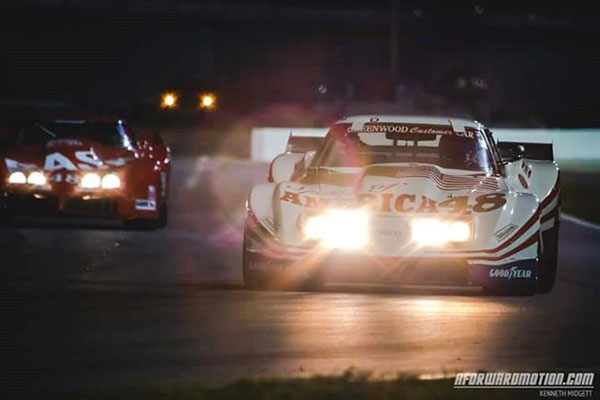
Two and a half decades onward, the legacy carved by Greenwood lives on. Greenwood cars and cars with Greenwood parts are a favorite in vintage racing and are highly prized by collectors worldwide. R.I.P., John Greenwood.
Greenwood expert Wayne Ellwood was instrumental in preparing this brief historical account. More John Greenwood stories are out there. We welcome yours via e-mail. jhyde@nyc.rr.com <mailto:jhyde@nyc.rr.com> and wayne.ellwood@rogers.com <mailto:wayne.ellwood@rogers.com>
John Greenwood Videos:
I have covered may of John Greenwood’s race cars over the years in my Vette Magazine “Illustrated Corvette Series” monthly column.
My John Greenwood art can be found on Amazon HERE.
Reproductions of my Corvette art are available from our Amazon.com store, HERE.
Below is one of the six Greenwood prints we have.
Also, we have posted many stories about the race cars of John and Burt Greenwood that you can enjoy HERE.
If you love Corvette race cars,
visit Registry of Corvette Race Cars, HERE.
